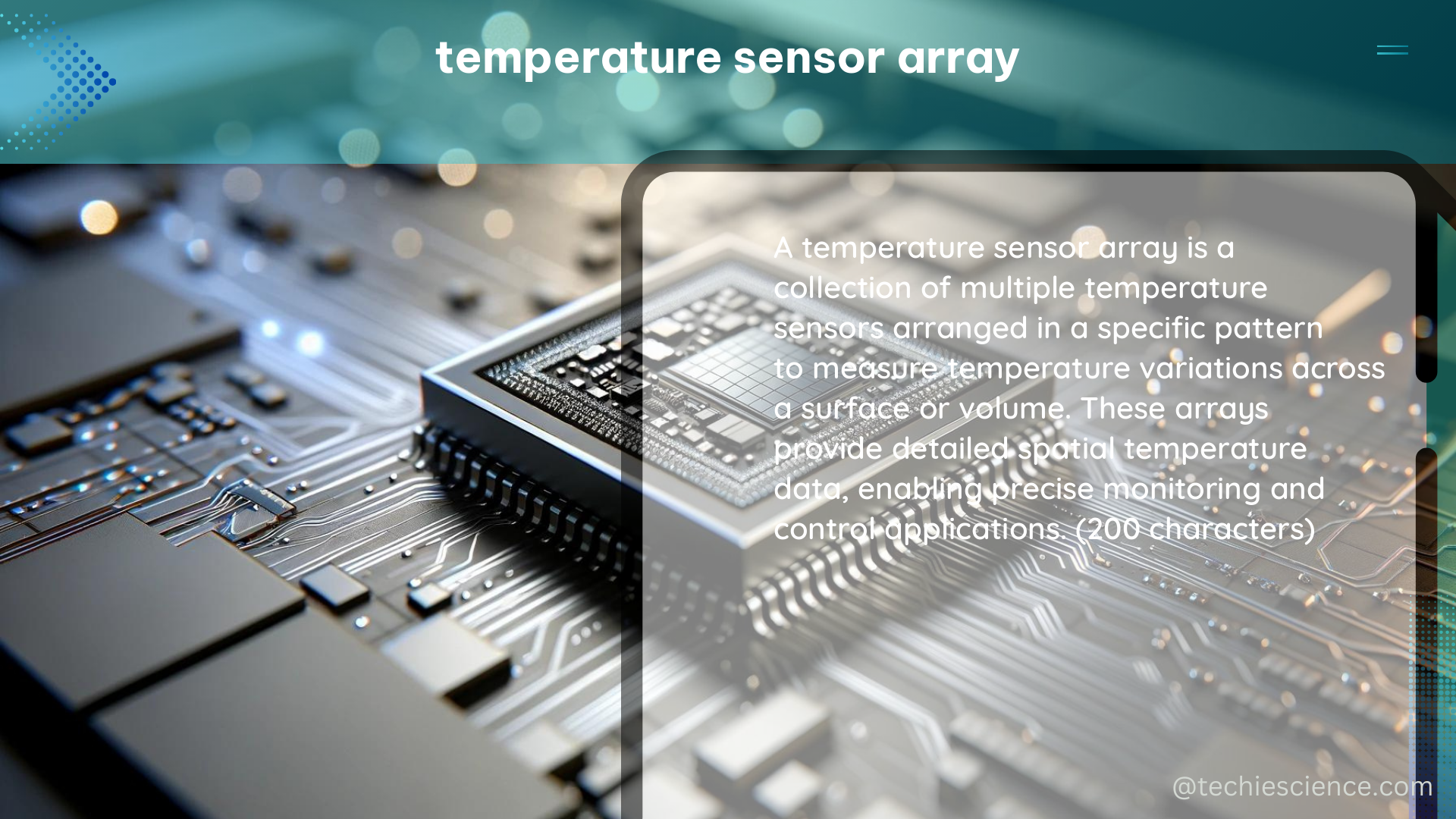Temperature sensor arrays are a revolutionary technology that have gained significant attention in recent years due to their exceptional capabilities in high-resolution thermal mapping. These arrays are designed on flexible substrates and can be fully printed, making them cost-effective and scalable. The sensor density and spatial thermal resolution of these arrays are truly remarkable, with the ability to accommodate over 100 sensors in a compact footprint of just 1 cm².
Fabrication and Structure
The fabrication of temperature sensor arrays is a straightforward process, primarily involving screen printing techniques combined with commercially available inks. This simple deposition methodology allows for the creation of a passive matrix structure consisting of only three layers, which significantly reduces the risk of errors during the fabrication process. The resulting arrays are highly cost-efficient and easily scalable, making them an attractive option for a wide range of applications.
Sensor Density and Spatial Resolution

One of the standout features of temperature sensor arrays is their unparalleled sensor density and spatial thermal resolution. By leveraging the latest advancements in printing technologies, these arrays can accommodate over 100 sensors within a small footprint of just 1 cm². This remarkable sensor density translates to a spatial thermal resolution that is unmatched by traditional temperature sensing solutions.
Readout and Characterization
The performance of temperature sensor arrays is meticulously measured and characterized using a specialized self-sufficient readout unit. This readout unit employs a machine learning (ML)-based approach to compensate for fluctuations in the sensor sheet, ensuring a robust and reliable setup. The ML-based approach also accounts for potential crosstalk between adjacent sensors, resulting in a high temperature prediction accuracy of 1.22 °C.
Accuracy and Inference
To further enhance the accuracy of temperature predictions, temperature sensor arrays utilize a well-trained neural network (NN) that provides fast yet precise temperature estimates during the inference process. The NN is trained to predict the temperature of individual pixels based on the obtained readout, taking into account the inherent variations in sensor characteristics due to the printing process. The average error in temperature prediction is around 1.22 °C, with a variance of 0.77 K².
Remarkably, the entire sensor array can be fully read, and the corresponding temperature predictions can be inferred within just 27 seconds, including the time required for sampling, multiplexing, and NN inference. This rapid response time is a testament to the efficiency and optimization of the temperature sensor array system.
Spatial-Temperature Distribution Detection
In addition to high-resolution thermal mapping, temperature sensor arrays can also be utilized for the detection of spatial-temperature distributions. This capability is achieved by inducing heat in different regions throughout the sensor sheet using printed micro-heaters. The thermal maps captured after inferring the temperature for each sensor on the array demonstrate the sensor array’s ability to accurately detect and visualize spatial-temperature distributions.
Applications and Potential
The versatility and performance of temperature sensor arrays make them a valuable tool for a wide range of applications. These arrays have found use in medical diagnostics, where their high-resolution thermal mapping capabilities can aid in the early detection and monitoring of various medical conditions. In industrial process control, temperature sensor arrays can provide real-time feedback on the thermal profiles of manufacturing processes, enabling optimization and improved efficiency. Furthermore, these arrays have potential applications in environmental monitoring, where their ability to detect spatial-temperature distributions can contribute to the understanding and management of complex thermal environments.
Conclusion
Temperature sensor arrays represent a cutting-edge technology that has revolutionized the field of high-resolution thermal mapping. With their exceptional sensor density, spatial resolution, accuracy, and rapid inference capabilities, these arrays have opened up new possibilities in various industries and research domains. As the technology continues to evolve, we can expect to see even more innovative applications and advancements in the field of temperature sensing and thermal imaging.
References:
- “Printed temperature sensor array for high-resolution thermal mapping,” Nature Communications, 2022.
- “A small size device using temperature sensor array,” ResearchGate, 2014.
- “Deep learning framework for sensor array precision and accuracy,” IEEE Sensors Journal, 2023.

The lambdageeks.com Core SME Team is a group of experienced subject matter experts from diverse scientific and technical fields including Physics, Chemistry, Technology,Electronics & Electrical Engineering, Automotive, Mechanical Engineering. Our team collaborates to create high-quality, well-researched articles on a wide range of science and technology topics for the lambdageeks.com website.
All Our Senior SME are having more than 7 Years of experience in the respective fields . They are either Working Industry Professionals or assocaited With different Universities. Refer Our Authors Page to get to know About our Core SMEs.